by timbaros
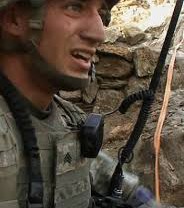 Battle Company: Korengal
Battle Company: Korengal
Sebastian Junger is a journalist who has been around and seen it all. Now he’s back with a new documentary called Battle Company: Korengal.
Junger first popped into the national conscious with his book The Perfect Storm, a true story about a group of fishermen who encountered a massive storm in the North Atlantic ocean. It was turned into a hit movie starring George Clooney and Mark Wahlberg. Junger then turned his focus into covering war zones and became more famous for being in the trenches with soldiers in Afghanistan. In 2009, Junger, along with Tim Hetherington, made a documentary called Restrepo. They both spent a year with one platoon in the Korengal Valley and turned their footage into this documentary, which was nominated for an Academy Award for Best Documentary.
Some of the footage, left over from Restrepo, now makes it into the new documentary Battle Company: Korengal. Just like Restrepo, the story is about U.S. Military platoons stationed in Afghanistan’s Korengal Valley, also known as the valley of death. It’s a valley of mountains, cliffs, trees, hilltops – enough camoflauge to disguise the enemy they were sent there to fight against – the Taliban. The Korengal Valley was a highway for Taliban activity, so thus it was important for the U.S. Military to prevent the Taliban from supplying their networks with weapons and supplies.
In this 90-minute documentary we meet the soldiers. Not one soldier stands out, they are all what you would expect from a military team facing almost certain death at their doorstep, which is a makeshift small military compound with very cramped quarters containing bunk beds, with running water and electricity (important for computer use). They are young, mostly white guys sent their to fulfill a mission. They live in a camp called Restrepo, which was named after a combat medic, Juan Restrepo, after he was killed in action.
The men, belonging both to the Second Platoon, B Company, 2nd Battalion, 503rd Infantry Regiment and the 173rd Airborne Brigade Combat Team of the U.S. Army have been assigned this post for over one year, and they’re there in four seasons. For ten months, both Junger and Hetherington embedded themselves with them at Restrepo to capture their lives and activities. The soldiers have lots of down time, and during this time they are extremely bored. The only highlights for them are when they get to actually shoot against the enemy, as well as their occasional trips into the villages to meet the village elders, who they are skeptical whether they can or cannot trust, meanwhile the Taliban could be hiding anywhere.
One soldier memorably says that in Korengal – “bad guys come to you, you don’t go to them.” Another soldier tells the camera that his mother told him to join the army, yet he still questions why he’s there. Another soldier, one of the few black men, says that being black is still not acceptable in the military, he says that he feels some of the guys still don’t accept him as one of their own because of the color of his skin. but what is said the most throughout the documentary is how they all watch out for each other, they consider each other like brothers. And alas, this is all we get from the documentary. There are no new revelations, nothing that we’ve not seen before, and fortunately none of the soldiers were killed or hurt during the making of Battle Company: Korengal. So what was the point of making this in the first place? Because the filmmakers had leftover footage from Restrepo that they felt could be used to make another documentary, exploring more the soldiers lives at Restrepo and focusing less (if not at all) on the war side of the story. Unfortunately, this makes for not very interesting documentary. Sadly, Hetherington, who shot a lot of this footage, was killed in 2011 while covering the Libyan War. Battle Company: Korengal is a last tribute to the work that he produced in his short life. He died at the age of 40.
Road
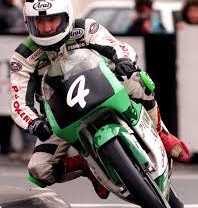 The lives and careers of two generations of Road Racers is explored in the new documentary Road.
The lives and careers of two generations of Road Racers is explored in the new documentary Road.
The sport of Road Racing is in effect racing motorcycles on the open roads. And the Dunlop family of Ireland have dominated this sport for over three decades. Road weaves the story of two generations of the Dunlops into a riveting documentary, even for those who know nothing about Road Racing, or even sports in general.
In the 1970’s, Robert and Joey Dunlop started racing motorcycles for fun in their hometown in Northern Ireland. They were young men who spent every minute they could on their motorcycles. They were in their late teens when they started Road Racing, racing on Ireland’s country roads where on any other day there would be traffic. This was part of the thrill, and the risk, of Road Racing. The roads in Ireland are not long stretches of road but they twist and turn, past forests and rock cliffs. So imagine racing these roads on a motorcycle going over 100 miles per hour, and it can be quite dangerous. But this is what Robert and Joey loved. Robert was a few years older than Joey, and they would compete against each other, and against the road itself.
In the late 1970’s, Joey was one of the top road racers in Ireland. But the dangers of the sport came to the forefront when in 1979 three racers died in the North West 200 – an annual race in Northern Ireland made up of public roads and one of the fastest races in the world, with the racers hitting speeds as fast at 200 mph. 100,000 spectators were on hand that year to watch the race.
Still, the Dunlops continued to race, in Ireland as well as on the Isle of Man. Throughout the 1980’s and 90’s Joey won or placed in the top 6 in almost all of the races he was in, he was just one of the best, or if not the best road racer of his time.
The second generation to take up road racing is Robert’s two sons Michael and William. The Road intersperses footage of the older Dunlop’s with the younger Dunlop’s, uncanny in their appearances and love of the sport. But Joey and Robert’s journeys in the sport turn tragic, and this is where the documentary picks up speed, in both content and emotion.
Robert was actually the first of the two brothers to be in a bad accident. In May 1994, Robert crashed into into a rock wall in a race he was expected to win and he was told that he would never walk again. Meanwhile, Joey continued to race, even into his 40’s, and winning lots of races, even though he was an older man in a young man’s sport. Joey also was less known for his charity work. He would, on his own, pack a van full of food and supplies and drive to the orphanages of Romania in Eastern Europe, however, a few years later it would be in Eastern Europe where Joey would ride his final race.
Robert, in the meanwhile, wanted to return to racing in 1996 but was banned due to his previous injuries, but in 1998 he came back strong and actually won a major race. The Dunlop family continued their dominance of the sport. By the late 1990’s when most men who have been racing after 30 years would retire, the Dunlops would not. In 2000, Joey would go on to win the TT race, 23 years after he first had won it. Robert came in third in the same race.
But it was a few years later when Joey was in a minor race in Estonia that he crashed his bike into a tree in a heavy thunderstorm. He died on impact. The outpouring of grief in Northern Ireland was so big that 50,000 people attended his funeral.
In 2004, William and Michael took up road racing, just like their father and uncle over 25 years before. Four years later, Robert Dunlop, at the age of 47, still in competition, was in a practice session for the NW200, a race his two sons were also in. Joey was traveling 150 MPH, and was going perhaps a little too fast for a practice session, when his tire buckled and came loose, throwing his body into the air, which went crashing to the ground, and then got run over by another bike. The unimaginable crash is shown in the documentary, taken from a camera in a helicopter, and we see his body fly off the bike and get hit by a motorcycle. It’s horrific and shocking, and also extremely gut-wrenching. And the course was just a few miles from his home.
Two days later, with the race was still scheduled to go on, and both William and Michael agreed that they would race in it in honor of their father. Race officials ruled that they both were too emotional and distraught and a harm to the other races and deemed them ineligible. But they both insisted to race, and got on their bikes. At the last minute, they were given the green light to race, but for some strange reason WIlliam’s bike wouldn’t work so it would be up to Michael to race in honor of their father. Miraculously Michael wins the race, and he breaks down, not only on his bike but also on the winner’s podium, winning one of the greatest (and most memorable) road races ever raced. And this gives the documentary it’s ending that no script writer could ever write – Michael winning a race, two days after his father had died on the same course.
Road is a bit slow to build, but it accelerates into an astonishing and extremely emotional documentary, with a story that I would’ve thought would not have interested me, but it did. The journey of Robert and Joey and how they lived their lives for the sport they loved, which in the end took their lives, is very powerful and moving. And the score, by Mark Gordon and Richard Hill, is haunting and memorable and emotional, and is perfectly suited for the ups and down you will experience watching this film. It is a superb score. Road is excellently narrated by Liam Neeson, who mentions during the film that ‘for a road racer, success and tragedy are separated by the narrowest of margins. Danger is ever present, death is a split second away’. Joey and Robert are buried next to each other in their hometown of Ballymoney, Northern Ireland, while Robert’s two sons continue to race.
 Chef, now playing in cinemas, is a real treat, from start to finish.
Chef, now playing in cinemas, is a real treat, from start to finish. Chef, now playing in cinemas, is a real treat, from start to finish.
Chef, now playing in cinemas, is a real treat, from start to finish.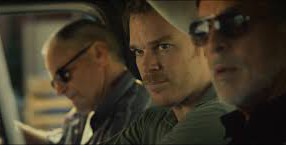 Two television stars, one big and one who used to be big, pair up in the new film Cold in July. It’s a film that would actually play better on the small screen then the big screen.
Two television stars, one big and one who used to be big, pair up in the new film Cold in July. It’s a film that would actually play better on the small screen then the big screen.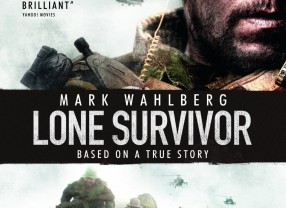 On June 27, 2005, the war in Afghanistan claimed the lives of 20 soldiers, the worst single day loss of life for the Naval Special Warfare personnel since WWII. There was one man who survived – Marcus Luttrell. Lone Survivor tells his story.
On June 27, 2005, the war in Afghanistan claimed the lives of 20 soldiers, the worst single day loss of life for the Naval Special Warfare personnel since WWII. There was one man who survived – Marcus Luttrell. Lone Survivor tells his story. Battle Company: Korengal
Battle Company: Korengal The lives and careers of two generations of Road Racers is explored in the new documentary Road.
The lives and careers of two generations of Road Racers is explored in the new documentary Road.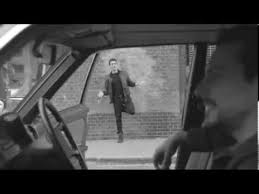 Looking for a stylish, black and white film about Soho and it’s denizens? Look no further than the new film Soho Cigarette.
Looking for a stylish, black and white film about Soho and it’s denizens? Look no further than the new film Soho Cigarette.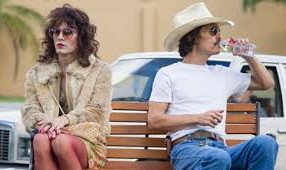 In the 1980’s there was no hope for people infected with the HIV virus. Immediately upon diagnosis, the infected were told that they had a short period of time left, perhaps a few months, or less. Dallas Buyers Club is a new film inspired by true events about the life of a man fighting for survival when given a death sentence upon his AIDS diagnosis.
In the 1980’s there was no hope for people infected with the HIV virus. Immediately upon diagnosis, the infected were told that they had a short period of time left, perhaps a few months, or less. Dallas Buyers Club is a new film inspired by true events about the life of a man fighting for survival when given a death sentence upon his AIDS diagnosis.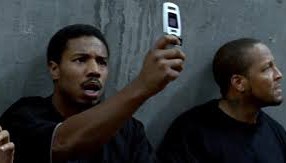 In 2009, 22 year-old Oscar Grant was shot, for no apparent reason, by a transit cop in San Francisco. He would later die of his wounds. Fruitvale Station is the movie that tells this story.
In 2009, 22 year-old Oscar Grant was shot, for no apparent reason, by a transit cop in San Francisco. He would later die of his wounds. Fruitvale Station is the movie that tells this story.





